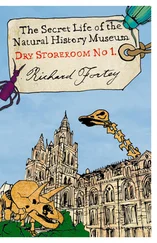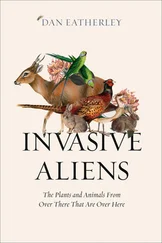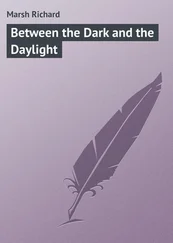It is possible to trace the horseshoe crab story still further back, into the Cambrian Period more than 500 million years ago, to a time when many of the major types of animals converge towards their common ancestors. The Cambrian was an interval of unprecedented evolutionary activity and I shall describe its special features in more detail in the next chapter. Early relatives of Limulus have been identified in Cambrian strata, but they include some species that look a little different from their hardy survivors. Some of them also look more like early trilobites, such as Olenellus, a form with a big head-shield surrounded by a narrow rim; one might expect a family resemblance if they are indeed closer to a common origin. There are important differences, too. Where the limbs of trilobites are known, they are similar all along the length of the animal: the paired limbs are each split into a walking leg carrying a comb-like branch near its base that in all likelihood functioned as a gill. They are not subdivided into different ‘packages’ in different parts of the body separating walking and feeding appendages in front from gills behind, as they are in Limulus. To add to this, all trilobites had typical ‘feeler’ antennae near the front of the head, and none had the strange chelicerae. This may not be so important, since having antennae seems to have been a general property of primitive arthropods. It might just be that the trilobites still retain this one characteristic more primitive than Limulus and its allies, but they could yet have descended from a common ancestor. Trilobites are abundant fossils on account of their easily preserved calcite hard parts. Fossils of unmineralised animals are altogether more unusual. Spectacular recent discoveries of fossils of soft-bodied animals preserved within Cambrian rocks have been made in China and Greenland. These have revealed an almost embarrassing variety of undoubted arthropods early in the Cambrian. Some of them might seem to bridge the differences between Limulus and its allies and the trilobites, but for every feature that points one way, there seems to be another that suggests something else. For more than a decade now palaeontologists have argued about how these fossils should be classified, and about the only thing they all agree upon is that the Cambrian threw up many animals with curious combinations of characteristics that were probably winnowed out by subsequent evolution. It is not, perhaps, so surprising that ‘mixed up’ animals lived at this Cambrian time, because all the arthropods were not genetically far apart then – they would have had the subsequent 500 million years to box themselves into more separate evolutionary compartments. In these early days the destiny of one animal to become a crustacean, say, and another a chelicerate was not easy to anticipate.
When scientists are confronted by conundrums of this kind, they usually turn to computers. There are now sophisticated computer programs that deal with the problems of determining relationships between animals. They work by identifying the particular arrangement of the creatures analysed on a branching tree that most succinctly accounts for the features they share with their fellows. The most significant resemblances in morphology should result in organisms being classified together on a single branch. Like so many computer methods, the inner workings of the process are staggering in their complexity, so that for a big problem like analysing the Cambrian arthropods millions of potential arrangements of trees embracing the animals under study will be inspected and rejected. My own appreciation of what goes on inside these machines is thoroughly naïve, and I cannot suppress a vision of thousands of cards being shuffled into piles like a supercharged game of Patience until the answer ‘comes out’. The end product is a diagrammatic tree (technically, a cladogram) that can look enticingly simple. I should add that the way the summary ‘tree of life’ on the endpapers is drawn is not like a cladogram, but it does incorporate the results of many individual cladistic analyses. Like all computer methods, the latter are subject to the familiar caveat of RIRO (Rubbish In Rubbish Out), but the fact that they have been so widely used indicates that they have helped with thorny problems. According to the analyses to date, on balance the trilobites indeed do still classify within a group that also includes the horseshoe crabs. Despite all the confusion of the Cambrian it seems my crusty-shelled friends and the dogged, eternally trundling horseshoe crabs are sisters under the external arthropod skin.
They do share special features. The larva of the horseshoe crab is a pinhead-sized object long known as the ‘trilobite larva’, because it does resemble the tiny larva of many trilobites. *Both kinds of animals grow larger with each moult in similar ways, casting off their old external housing and re-growing larger premises. Then there are the compound eyes. In both trilobites and horseshoe crabs the eyes are included as part of the head-shield, rather than sticking out separately at the front on flexible stalks as they are in the majority of crustaceans. Most of us will have looked a lobster in the eyes before popping him into the pot. The lenses of the trilobites are unique in the animal kingdom, since they are made of the mineral calcite. Hard calcite makes up the hard parts of the trilobite, providing the crusty shield that covers the back of the animal known as the dorsal exoskeleton. Calcite has also been recruited to provide the material for the lenses of the eye – so they have become ‘crystal eyes’ if you will. The individual lenses are minute in many trilobite eyes (they can have several thousand), but each separate lens presumably responded to an external light stimulus, and then an optic nerve conveyed the information to the brain. Eyes with many small lenses are usually thought of as particularly sensitive to movement: a moving image progressively impinges on different lenses within the field of view. Both trilobites and Limulus have eyes that look predominantly sideways, scouting around over the sea floor where they live. Strangely enough, the eye of Limulus has been very intensively studied. Haldan K. Hartline of the University of Pennsylvania used the eye of the horseshoe crab as his experimental material to investigate the physics of animal vision. In the 1930s he was the first scientist able to record the activity of a single optic nerve fibre attached to a lens (ommatidium). Limulus has about a thousand such fibres in the eye, and we might well imagine that trilobite eyes had at least a comparable sensitivity. He later showed how different fibres in the optic nerves respond to light in selectively different ways. This opened up the route to a whole new field of physiology – and earned Hartline the Nobel Prize in 1967. Robert Barlow and his colleagues are now building further on Hartline’s research. They have attached miniature video cameras onto living animals in order to scrutinise exactly where the horseshoe crabs are looking. The eyes seem to exhibit an unsuspected sophistication. There is apparently a natural, or circadian rhythm in the sensitivity of the ocular system, which combines with other dark-adaptive mechanisms so that their sensitivity at night may be as much as a million times more acute than in the daytime. Crabs are particularly attuned to recognising potential mates, which, given the frenetic activity along Delaware Bay, is not altogether surprising. The ability of the Limulus eye to eliminate visual ‘noise’ is quite extraordinary (think of our own faltering attempts to really see very faint stars on a dark night), and Dr Barlow is currently trying to understand how this works right down at the molecular level. It is probably the case that we know as much about the visual system of this ancient arthropod as about that of any other living creature. But the more we know the more we might wonder whether this particular survivor is primitive or just exquisitely adapted. Did the trilobites have blue blood? There is no final proof one way or the other; nor can there ever be with such perishable stuff as blood. However, there are many examples of trilobites that have been severely bitten and yet have survived. They usually show a sealed-off gouge on one side. Even in the early Cambrian there were predators such as the lobster-sized Anomalocaris and its relatives that might have regarded a trilobite as a crunchy snack. Anomalocaris was a strange, but evidently raptorial arthropod with two long grasping arms and a mouth surrounded by plates. In those days of accelerated evolutionary change natural selection would rapidly have favoured any mutation that stopped a wounded trilobite from bleeding to death, and the same would have applied to any of its relatives. Since the circulation system of Limulus, and doubtless of a trilobite, is diffuse compared with our own – it more or less fills the open spaces between the other internal organs – a general clotting agent would have been at a premium. It does seem possible that the alternative way of making blood – the copper route – could have had a very long pedigree, and that the blue ichor’s ability to seal wounds and its sensitivity to infection could have helped both trilobites and horseshoe crabs to survive in a newly vicious world. This is one of those moments when palaeontologists wish they could circumvent the rules of the space-time continuum, and go back and see for themselves. As it is, we have to make do with more or less plausible guesses, in the process trying to persuade our fellow scientists that we have undoubtedly arrived at an entirely logical conclusion. History, of course, does not necessarily have to follow our own human logic, and may have surprises of its own.
Читать дальше












